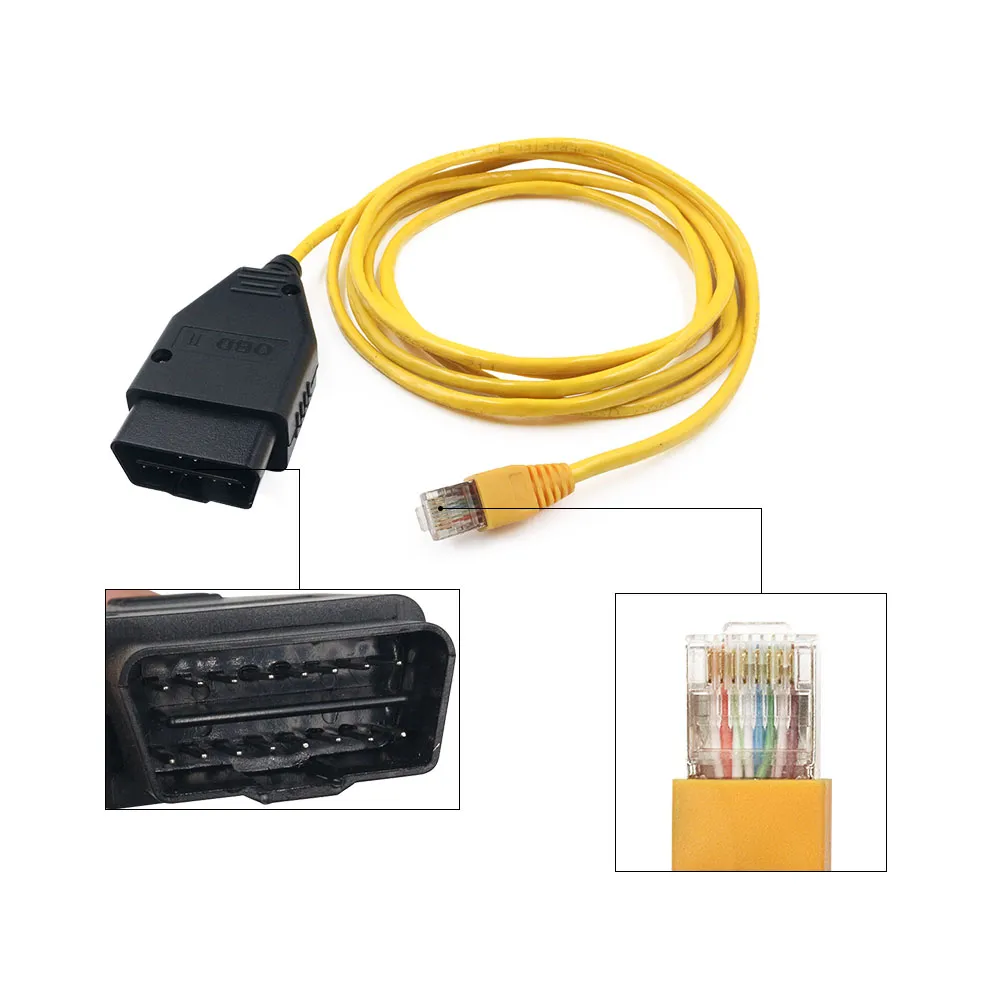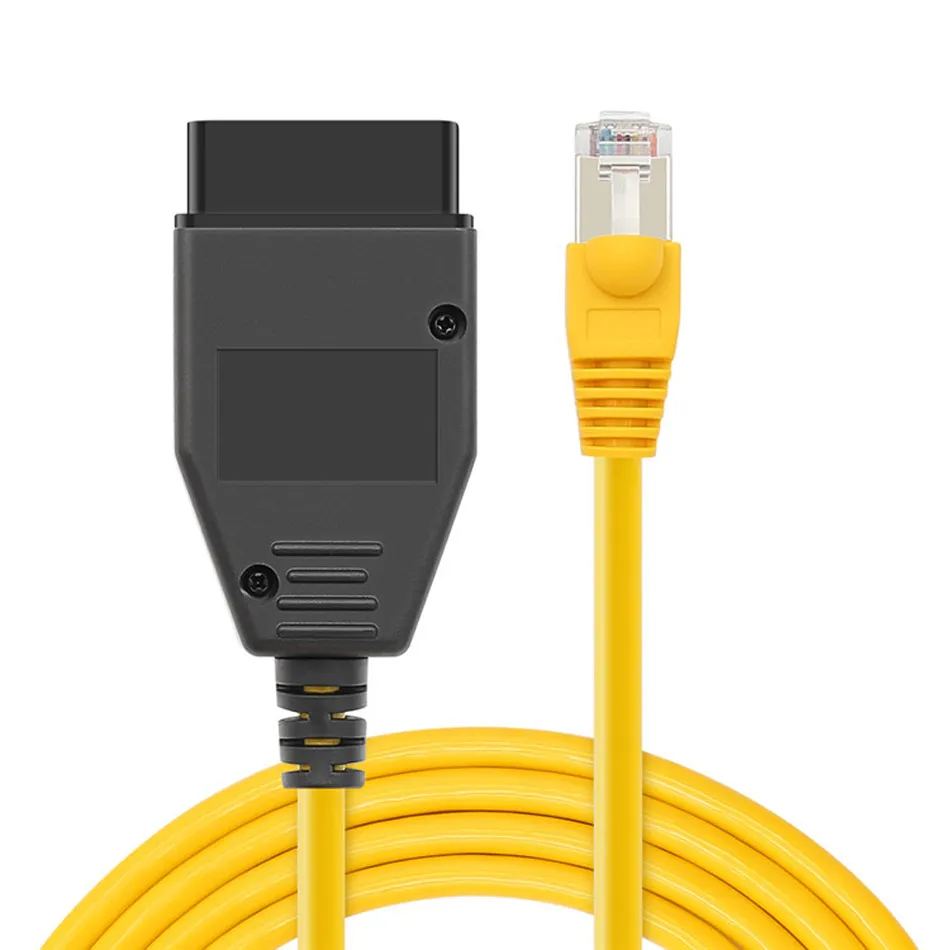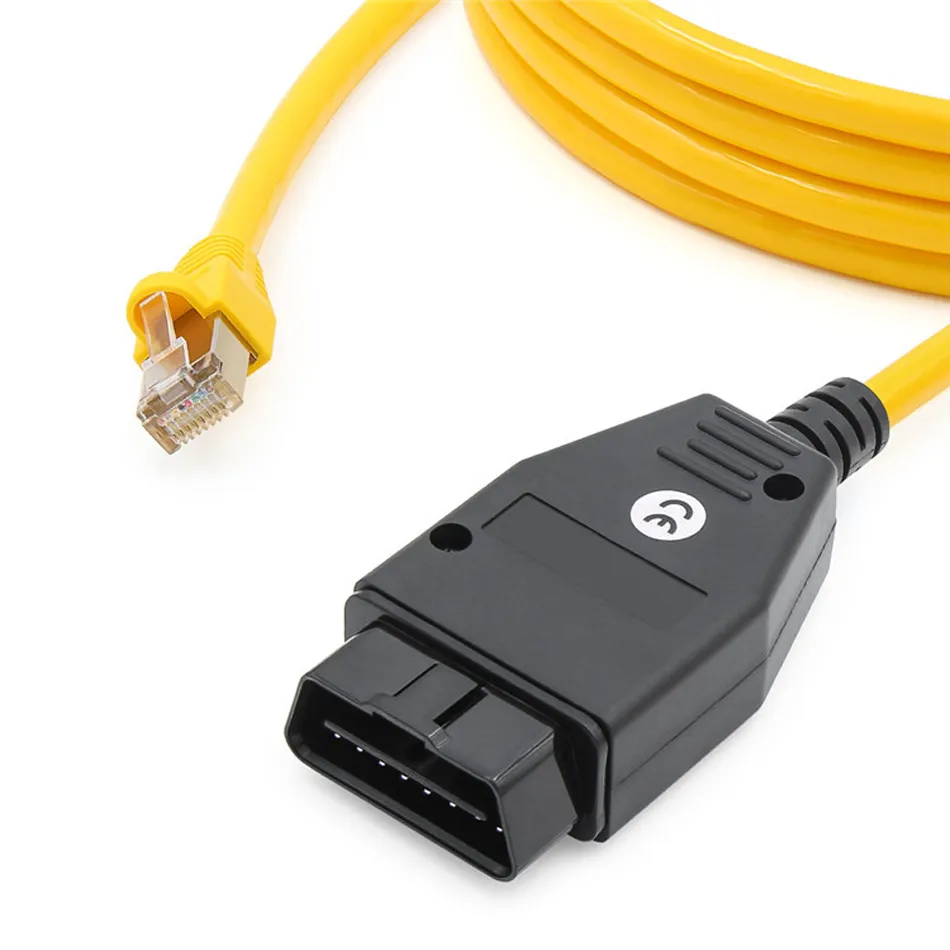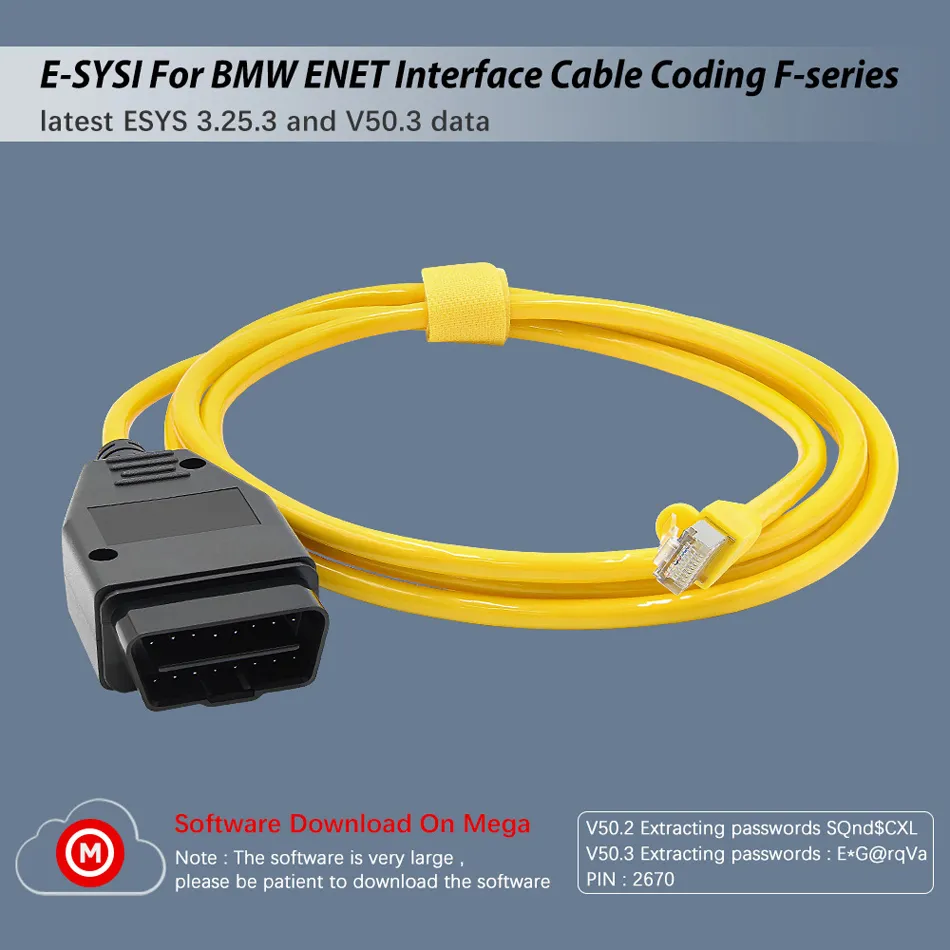ENET cable is a powerful tool for diagnosing and programming BMW F-Series vehicles. Unlike traditional diagnostic tools, ENET cable offers faster data transfer speeds and more accurate readings. In this article, we provide a step-by-step guide on how to use ENET cable, including how to set it up for use on BMW F-Series vehicles and how to diagnose and program various systems using coding and flashing firmware updates. We also discuss the cost-effectiveness of using ENET cable compared to other diagnostic tools and offer troubleshooting tips and solutions to common issues users may experience. Unlock the power of ENET cable for your BMW F-Series vehicle and save time, money, and improve performance.









Introduction: What is ENET Cable for BMW F-Series Vehicles and Why is it Important?
– Discuss the features of an ENET cable that set it apart from other diagnostic tools, such as its ability to access hidden features in BMW F-Series vehicles.
– Explain how an ENET cable can be used for programming and coding tasks, including customizing vehicle settings and updating software.
– Provide examples of specific scenarios where an ENET cable would be a useful tool for BMW owners or technicians.
– Address any potential concerns or drawbacks of using an ENET cable, such as the risk of damaging the vehicle’s electronics if not used correctly.
– Summarize the key points made in the article, emphasizing the importance and versatility of an ENET cable for BMW F-Series vehicles.
– Encourage readers to consider investing in an ENET cable for their own BMWs or recommending it to others in the industry.
– End with a final call-to-action to further research the benefits and applications of an ENET cable for BMW F-Series vehicles.
ENET Cable for BMW F-Series Vehicles: The Ultimate Diagnostic Tool
Every car owner knows how important it is to keep their vehicle well-maintained in order to ensure its optimal performance. But when it comes to BMW F-Series vehicles, keeping up with diagnostics and programming can be a daunting task. Enter ENET cables – the ultimate diagnostic tool for BMW enthusiasts and technicians alike.
At its core, an ENET cable is a diagnostic tool that allows users to access and modify a wide range of features in BMW F-Series vehicles. Unlike traditional diagnostic tools, ENET cables offer a host of benefits that make them an indispensable tool for anyone who owns or works on these types of vehicles.
One of the main advantages of using an ENET cable is its ability to access hidden features in F-Series BMWs. These hidden features include everything from customizing the lighting and entertainment systems to modifying the engine performance and transmission settings. With an ENET cable, users can unlock these features and make their BMW truly unique.
In addition to accessing hidden features, an ENET cable can also be used for programming and coding tasks. This includes updating software, customizing vehicle settings, and even diagnosing and repairing common issues like check engine lights. For BMW owners who want to take their vehicle maintenance into their own hands, an ENET cable is a must-have tool.
But what about concerns or potential drawbacks to using an ENET cable? While there is always some risk involved when working with a vehicle’s electronics, proper use and caution can mitigate these risks. It’s important to do your research and ensure you have the right knowledge and equipment before attempting any modifications or repairs with an ENET cable.
How to Use ENET Cable: Step-by-Step Guide
Setting up the ENET cable for use on BMW F-Series vehicles:
Before getting started, it is important to make sure that you have the necessary software and drivers installed on your computer. Some popular software options include BimmerCode, E-Sys, and Carly. Once you have the software installed, follow these steps to set up your ENET cable:
1. Connect the ENET cable to your OBD-II port in the car and to your computer’s USB port.
2. Open the software you have installed on your computer.
3. Follow the instructions provided by the software to establish a connection between your car and your computer.
Once the ENET cable is set up properly, you can begin diagnosing and programming various systems within your car.
Diagnosing and programming using ENET cable:
Coding:
Coding involves making changes to the software in your car’s control modules. This can be done for a variety of reasons, including increasing performance or adding new features. Here is a step-by-step guide to coding using an ENET cable:
1. Connect the ENET cable to your OBD-II port in the car and to your computer’s USB port. Make sure that the car’s ignition is turned on.
2. Open the coding software you have installed on your computer.
3. Follow the instructions provided by the software to establish a connection between your car and your computer.
4. Use the software to identify which control module you want to code.
5. Follow the instructions provided by the software to make the desired changes to the control module’s software.
Flashing firmware updates:
Firmware updates are essential to ensuring that your car’s systems are running efficiently and effectively. Here’s how to flash firmware updates using an ENET cable:
1. Connect the ENET cable to your OBD-II port in the car and to your computer’s USB port. Make sure that the car’s ignition is turned on.
2. Open the flashing software you have installed on your computer.
3. Follow the instructions provided by the software to establish a connection between your car and your computer.
4. Use the software to select the correct firmware update file.
5. Follow the instructions provided by the software to install the firmware update.
Advantages of Using ENET Cable for BMW F-Series Vehicles
– Address any potential concerns or drawbacks of using ENET cables and provide solutions or alternatives.
If you own a BMW F-Series vehicle, then you might already be aware of the importance of having a reliable diagnostic tool for programming and diagnostics. One such tool that has gained popularity among BMW enthusiasts is the ENET cable. In this article, we will explore the advantages of using an ENET cable for BMW F-Series vehicles.
Firstly, one of the biggest advantages of using an ENET cable is the faster data transfer speeds it offers. Compared to traditional diagnostic tools, ENET cables can offer up to 10 times faster data transfer rates. This means that you can quickly and accurately diagnose any issues with your vehicle and get back on the road in no time.
In addition to faster data transfer speeds, ENET cables also offer more accurate readings. This is because they have been specifically designed to work with BMW F-Series vehicles, ensuring that you get the most precise readings possible. This can help you identify and troubleshoot any issues with your vehicle quickly and efficiently.
Aside from their speed and accuracy, ENET cables are also cost-effective compared to other diagnostic tools. Traditional diagnostic tools can come with hefty price tags, making them inaccessible for many vehicle owners. However, ENET cables are affordable and readily available, making them a great alternative for those on a budget.
Another advantage of using an ENET cable is their versatility. They can be used on a variety of BMW F-Series vehicles, making them a great investment for those who own multiple BMW models. This means that you do not need to purchase separate diagnostic tools for each of your vehicles, saving you both time and money.
While ENET cables do offer numerous benefits, it is important to address any potential concerns or drawbacks. One issue that some vehicle owners may encounter is compatibility with certain models or software versions. However, this can be easily resolved by researching compatible software versions and purchasing a high-quality ENET cable that meets your specific needs.
Troubleshooting Common Issues with ENET Cable
However, despite their popularity, users may still experience some common issues when using ENET cables. In this article, we will highlight these issues and provide troubleshooting tips and solutions to resolve them.
1. Slow Internet Speeds
One of the most frustrating experiences that users may encounter when using an ENET cable is slow internet speeds. Slow internet speeds can be attributed to several factors, such as outdated hardware or software, network congestion, or a faulty cable. To troubleshoot this issue, you can try the following steps:
– Check your internet speed by performing a speed test. This will help you know if the problem is with your internet provider or the cable.
– Check the cable connections to ensure that they are firmly plugged in. Loose connections may cause signal loss, which leads to slow internet speeds.
– Update your modem/router firmware. Outdated firmware may cause slow internet speeds.
– Try replacing your ENET cable with a new one. Faulty cables can cause slow internet speeds.
– If all else fails, contact your internet provider for further assistance.
2. Poor Signal Quality
Another common issue that users may face when using an ENET cable is poor signal quality. This issue often results in intermittent connection or no connection at all. To troubleshoot this issue, you can try the following:
– Ensure that the cable is not damaged or broken. Physical damages to the cable can cause poor signal quality.
– Check the cable length. Generally, ENET cables should not exceed 100 meters. Longer distances may cause signal attenuation, leading to poor signal quality.
– Check the cable category. ENET cables come in different categories, with each category supporting different data transmission rates. Ensure that you are using the right cable category for your internet needs.
– Try resetting your modem/router. Sometimes, resetting the modem/router can help improve signal quality.
3. Connection Drops
ENET cable users may also experience connection drops, where the internet connection keeps disconnecting intermittently. This issue can be frustrating, especially when streaming or gaming online. Here are some tips to troubleshoot this issue:
– Check the cable connections. Loose connections can cause connection drops.
– Check for interference from other electronic devices such as microwaves, cordless phones, or Bluetooth speakers. These devices may cause signal interference, leading to connection drops.
– Try changing the ISP DNS server settings. Sometimes, incorrect DNS server settings may cause connection drops.
– Try updating your modem/router firmware.
Conclusion: Unlocking the Power of ENET Cable for BMW F-Series Vehicles
One of the key benefits of ENET cables is their ability to diagnose and troubleshoot issues within the vehicle’s systems. This means that drivers no longer have to rely on expensive dealer visits or guesswork when it comes to maintaining their vehicles. With an ENET cable, you can quickly identify and fix small issues before they become major problems.
Another benefit of ENET cables is that they allow drivers to customize their vehicle’s settings to suit their individual needs and preferences. From adjusting the car’s lighting to changing the sound system’s equalizer settings, the possibilities for customization are endless. This level of personalization can significantly enhance the driving experience and make every trip more enjoyable.
Perhaps the most significant advantage of ENET cables is their ability to unlock hidden features within the vehicle’s software. These features are often disabled by default, but with an ENET cable, they can be easily activated. For example, some BMW models have a feature called “M-Performance” which can significantly increase horsepower and torque. Without an ENET cable, this feature would remain inaccessible.
Overall, ENET cables are a powerful tool that every BMW F-Series driver should consider adding to their toolkit. By accessing the vehicle’s electronics, drivers can save time, money, and improve their vehicle’s performance. So why not explore the power of ENET cables today and take your driving experience to the next level?
FAQ
Q1. What is an ENET cable?
ENET cables are specifically designed for use with BMW F-Series vehicles and are used for diagnostics and programming purposes. They connect to the vehicle’s OBD-II port and allow for efficient communication between the vehicle and a computer or programming device.
Q2. How do I use an ENET cable for diagnostics?
To use an ENET cable for diagnostics, you will need to connect it to your BMW F-Series vehicle’s OBD-II port and plug the other end into a laptop or programming device. From there, you can run diagnostic software and access various systems within the vehicle, such as the engine, transmission, and electronics. This allows you to identify any issues or faults within the vehicle’s systems quickly and efficiently.
Q3. Can I program my BMW F-Series vehicle using an ENET cable?
Yes, the ENET cable is also designed for programming purposes and allows you to update and reprogram various systems within your BMW F-Series vehicle. This can include updating the car’s software, changing settings, and even adding new features to the vehicle.
Q4. Is an ENET cable compatible with all BMW F-Series vehicles?
While ENET cables are specifically designed for use with BMW F-Series vehicles, they may not be compatible with all models. You should always check the compatibility of your specific BMW model before purchasing an ENET cable to ensure that it will work properly. Additionally, it is essential to ensure that you are using the correct software and have the necessary technical knowledge before attempting any diagnostics or programming on your BMW vehicle.